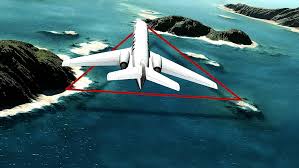Freshwater is one of Earth’s most vital resources. Whether for drinking, cooking, sanitation, or industrial use, access to clean, safe water is a necessity for both individuals and communities. But in many environments—especially at sea or in remote coastal areas—access to fresh water is limited or nonexistent. That’s where Fresh Water Generators (FWGs) come into the picture.
These ingenious machines allow humans to extract fresh, usable water from seawater. Whether installed on commercial ships, naval vessels, oil platforms, or isolated islands, fresh water generators have become indispensable in ensuring survival and operational efficiency in marine and offshore environments.
🌊 What is a Fresh Water Generator?
A Fresh Water Generator is a mechanical or electrical system designed to produce potable (drinkable) water from seawater. This process is known as desalination, and FWGs are a specific category of desalination units that are usually compact, efficient, and optimized for maritime applications.
While desalination technology is also used in large-scale plants on land, FWGs are typically built to be smaller, self-contained units that can operate independently on ships, submarines, offshore drilling rigs, and remote coastal communities where fresh water sources are not available.
⚙️ Types of Fresh Water Generators
Fresh water generators can operate using several different principles, the most common being thermal distillation and reverse osmosis (RO). Both methods are designed to remove salt and impurities from seawater, but they do so in different ways.
1. Thermal Distillation (Evaporator Type FWG)
This is one of the oldest and most reliable methods of desalination. It mimics the Earth’s natural water cycle—evaporation and condensation—to separate salt and other impurities from water.
Process:
-
Heating: Seawater is introduced into a chamber where it is heated, usually using waste heat from the ship’s engine cooling system or dedicated heating coils.
-
Evaporation: The heated water begins to evaporate, forming steam. Salt and minerals, being non-volatile, are left behind in the brine.
-
Condensation: The steam is then cooled and condensed into liquid form using a cold plate or coil.
-
Collection: The resulting water is collected in a tank as distilled, potable water.
Thermal distillation is energy-intensive, but ships often have an excess of thermal energy from engine operations, making this method highly efficient in marine settings.
2. Reverse Osmosis (RO) FWG
Reverse osmosis is a more modern, membrane-based technology that uses pressure rather than heat to separate fresh water from saltwater.
Process:
-
Pre-filtration: Seawater passes through a series of filters to remove particles and debris.
-
High-Pressure Pumping: Water is pumped at high pressure through a semi-permeable membrane.
-
Separation: The membrane allows water molecules to pass while blocking salt and other impurities.
-
Post-treatment: The purified water may undergo remineralization or UV sterilization before being stored or used.
RO systems are typically more compact and can operate in cooler conditions, but they require electrical power and high-pressure pumps, making them slightly more complex and maintenance-intensive than thermal systems.
🚢 Applications of Fresh Water Generators
Fresh water generators are most commonly used in the following environments:
-
Marine Vessels: Commercial ships, fishing boats, cruise ships, and naval vessels rely on FWGs for a continuous supply of drinking and utility water.
-
Offshore Platforms: Oil rigs and remote drilling platforms depend on FWGs as they are often located far from fresh water sources.
-
Island Communities: Small or remote island populations use FWGs to meet daily water demands, especially where rainfall is inconsistent.
-
Disaster Relief & Military Camps: Portable FWG units are sometimes deployed in areas affected by natural disasters or in field camps to provide emergency water supplies.
🌱 Advantages of Fresh Water Generators
-
Self-Sufficiency: Ships and platforms become independent of onshore water supply or frequent resupply missions.
-
Space-Saving: Instead of storing tons of fresh water, only seawater is needed, which is abundant and readily available.
-
Environmental Benefit: Using waste heat in thermal systems reduces overall energy waste.
-
Continuous Supply: FWGs provide a consistent, reliable source of water, regardless of location.
⚠️ Challenges and Limitations
Despite their advantages, fresh water generators come with certain challenges:
-
Maintenance: RO systems, in particular, require regular filter and membrane replacement. Thermal systems need periodic descaling.
-
Energy Use: Although ships often repurpose waste heat, FWGs still require a significant amount of energy to function.
-
Brine Disposal: Both systems produce a highly concentrated salt brine, which must be disposed of properly to avoid environmental damage.
-
Initial Cost: Installation and setup of an FWG system can be expensive, though the long-term savings often justify the investment.
🔍 Innovations and Future Trends
The future of desalination and fresh water generation is promising. Some exciting developments include:
-
Solar-Powered FWGs: Harnessing solar energy to operate thermal or RO units, ideal for island or coastal communities.
-
Graphene Membranes: These advanced materials promise higher efficiency and less energy consumption in RO systems.
-
Modular and Portable Units: Designed for quick deployment in disaster zones or remote locations.
-
Hybrid Systems: Combining thermal and RO processes to increase yield and reduce waste.
💧 Conclusion
Fresh water generators are more than just machines—they are enablers of life, exploration, and resilience. In a world where water scarcity is a growing concern, especially in marine and remote environments, FWGs offer a lifeline. They allow ships to sail longer, offshore platforms to function independently, and isolated communities to access clean water.
With technology constantly advancing, FWGs are becoming more efficient, compact, and environmentally friendly. Whether you’re crossing an ocean or building a sustainable future in a water-stressed region, the ability to turn seawater into fresh water is one of humanity’s greatest innovations—and it’s only getting better.
